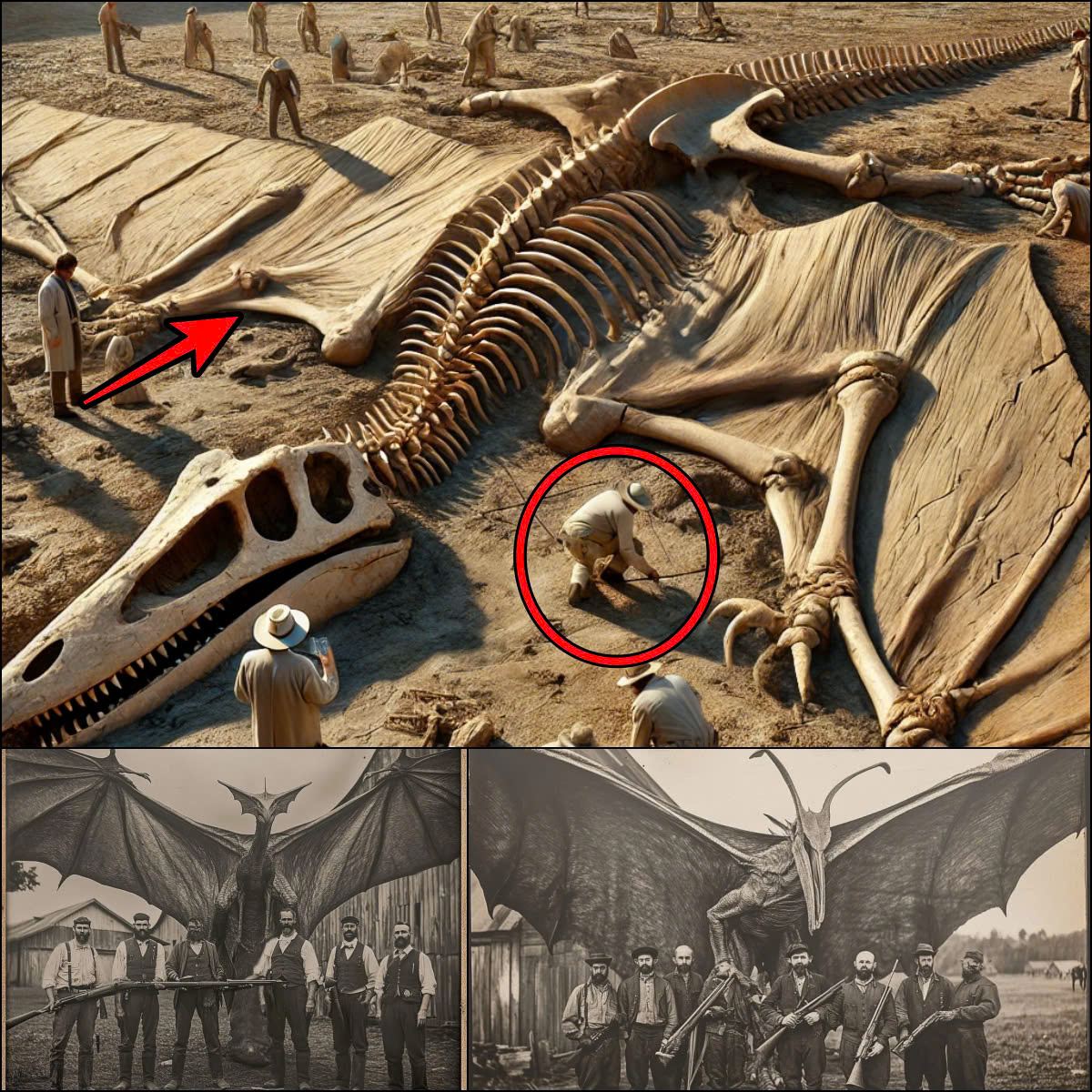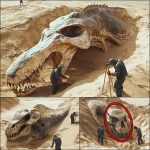Unearthed in the Desert: Chile’s Ancient Thunder Lizard

In the sun-scorched expanses of Chile’s Atacama Desert, one of the driest places on Earth, archaeologists have made a discovery that feels torn from legend: the fossilized remains of a colossal winged creature unlike any known species. Dubbed the Ancient Thunder Lizard, this prehistoric giant challenges our understanding of evolution and reignites humanity’s fascination with the blurred line between science and myth.

The fossil reveals a creature with an immense wingspan and a skull distinct from any previously cataloged flying reptile. Its elongated bones and unusual cranial features suggest it may represent an entirely new evolutionary branch of pterosaurs, lost for millions of years to history. Scientists believe it soared across the skies of the Cretaceous period, dominating an ecosystem where dinosaurs ruled the land and marine reptiles hunted the seas.
What makes the find especially captivating is its cultural resonance. Could such a beast have inspired ancient myths of sky-beasts and thunder gods? Across cultures, winged creatures have long symbolized power, fear, and divinity. In South American traditions, stories of thunderbirds and sky spirits echo with descriptions that uncannily resemble what the fossil record is now beginning to reveal. The discovery of the Thunder Lizard may prove that ancient imagination was rooted, at least in part, in encounters with prehistoric remains eroding from desert stone.

From a scientific perspective, the find is groundbreaking. The Atacama Desert’s dry, stable climate acted as a natural preservative, allowing delicate fossil structures to survive for tens of millions of years. These remains provide researchers with rare insight into the diversity of Cretaceous ecosystems in South America, revealing how climate, geography, and evolution intersected to produce species we are only beginning to understand. But the fossil also raises more questions than answers. How did the Thunder Lizard live? Was it a predator swooping on smaller creatures, or a scavenger riding the desert winds? Why did it vanish while others endured? Each unearthed bone is a fragment of a story still being pieced together.
Beyond paleontology, the discovery underscores a larger truth: the desert is not empty but alive with history, guarding secrets of worlds long vanished. Every excavation reminds us that the ground beneath our feet holds the potential to rewrite history, to reveal species, cultures, and ecosystems forgotten by time.
The Ancient Thunder Lizard of Chile is more than a fossil—it is a bridge between past and present, between myth and reality. It embodies humanity’s endless quest to understand its place in nature’s story, while affirming that even in the harshest landscapes, the earth still whispers of giants that once ruled the skies.
The desert has spoken, and its voice is thunder.
#PrehistoricMystery #AncientChile #AtacamaFossil #ThunderLizard











